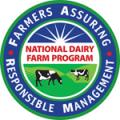USDA to Spend $60 Million on Cheese for Domestic Feeding Programs
The U.S. Department of Agriculture announced last week that it will spend all of the $60 million it was given by Congress on the purchase of consumer-ready cheeses, as NMPF had urged the Department to do. The FY 2010 Agriculture Appropriations bill, passed by Congress this summer and signed into law by the President in October, included $60 million for the purchase of dairy products; NMPF urged all the purchases to be for cheese, as it will have the maximum benefit for producer prices.
The USDA said that it will procure cheddar and mozzarella cheese for delivery between March 16 and December 31, 2010. The products will be distributed through the Emergency Food Assistance Program. Solicitation is expected to be available on or after December 29, 2009, and will be available electronically on USDA's website.
There is no word yet on how USDA will distribute the other $290 million in dairy aid in the form of direct payments to producers. However, the Farm Service Agency (FSA) has instructed its state and county offices to collect all production data for February through July 2009, including production over the original MILC cap, in anticipation of the payment distribution process.











